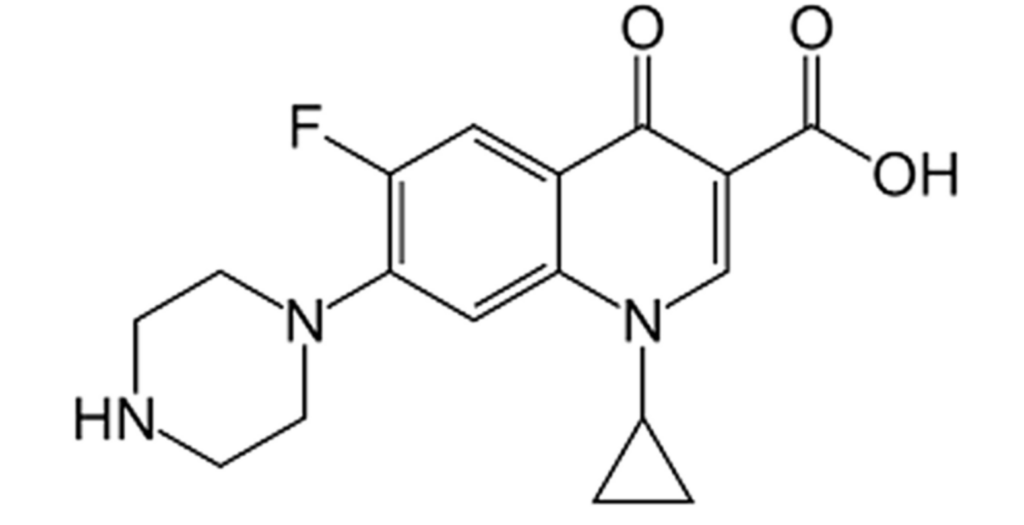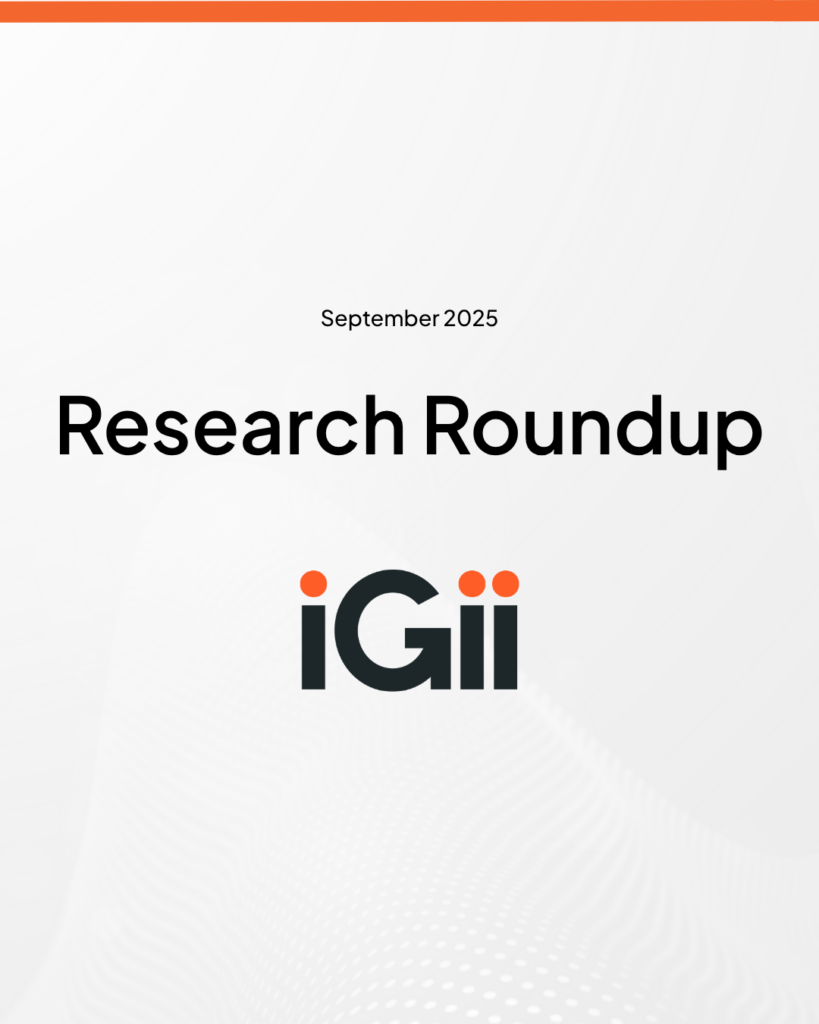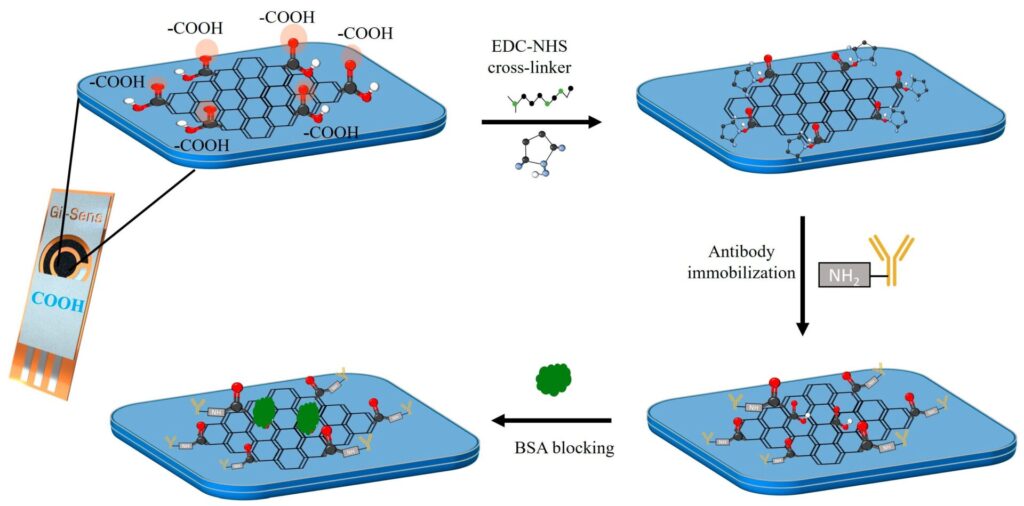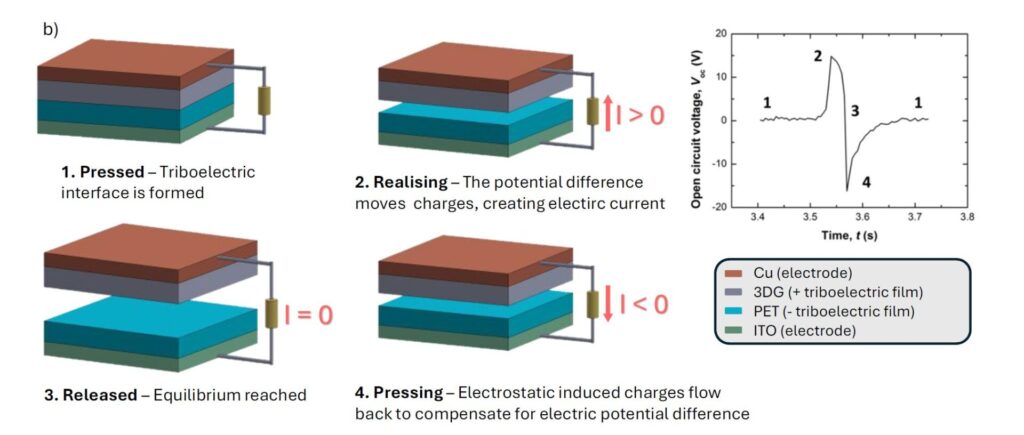
Enhancing antibiotic detection via an aptasensor: the case of ciprofloxacin
Highlights
- An aptamer-based sensor was developed for the detection of ciprofloxacin, the active pharmaceutical ingredient of the antibiotic, with a cost-efficient, faster and better electrochemical test based on Gii.
-
Low limits of detection were recorded down to 3nM, with a dynamic range of 10nM to 100nM.
- This development has shown great potential for use in a diverse range of detection, whether in food samples, environmental samples or pharmaceutical settings, to enable timely tests to be conducted for more informed decisions to be made quickly.
Abstract
The need for fast, efficient, and cost-effective test systems for antibiotics is surging, to control resistant bacterial strains. Electrochemical biosensors offer a good alternative to routine laboratory-bound analytical methods. These biosensors are portable, suitable for in-field analysis and biocompatible for detection of small biomolecules.
The aim of this work is the ciprofloxacin active pharmaceutical ingredient since resistance of bacteria to this antibiotic is reportedly increasing worldwide, especially in Lebanon, where hospitalisation bills are no longer affordable.
So, the target is ciprofloxacin detection, a fluoroquinolone antibiotic, on screen-printed electrodes. This aptamer acts as an anchor for the ciprofloxacin molecule, allowing the latter’s attachment to the electrode and its quantification.
Electrochemical characterisation, through cyclic voltammetry (CV) and electrochemical impedance spectroscopy (EIS) allowed for the deposition of molecules on electrodes and confirmation that an electrochemical change took place.
Scanning Electron Microscope images are used to confirm conformational changes on the surface of electrodes.
Impedance results reported a limit of detection of LOD = 3 nM, a dynamic range from 10 nM to 100 µM, and reproducibility of results between two aptasensors to be 10%. Moreover, impedimetric sensor specificity evaluation was through the effect of interfering compounds tobramycin, ofloxacin, norfloxacin and ceftriaxone, on the aptasensor’s response.
Based on available literature, this LOD level reached allows for the detection of ciprofloxacin via a portable potentiostat in environmental (wastewater, food), biological (urine, saliva) and pharmaceutical samples (efficient market withdrawal of counterfeit medications from pharmaceutical storage facilities).
Introduction
The World Health Organization (WHO) declared antibiotic resistance a “major threat to public health”. 300 million people worldwide are expected to die prematurely due to antibiotic resistance over the next 35 years [1]. The main cause of antibiotic resistance is too much antibiotic use [2]. Some bacteria die when antibiotics are consumed, but resistant bacteria can survive and even multiply. The overuse of antibiotics makes resistant more common bacteria. Antibiotics can be used voluntarily as medicines for treatments or involuntarily when eating [3] antibiotic-contaminated substances. Then the control of consumable substances is highly necessary.
Each year in the European Union (EU) alone, over 25,000 people die from infections caused by antibiotic-resistant bacteria [1]. Healthcare costs of antimicrobial resistance (AMR) are soaring worldwide. Regionally in Lebanon, a recent paper published in 2021 evaluates these costs in Lebanese hospitals [4]. An increase in resistant bacteria versus susceptible ones causes an increase in healthcare and community-associated infections. Thereby, causing an increase in patient bills. Longer hospital stays are recorded at 2.69 days vs 2.2 days, and higher hospital charges 1807 vs 889$ [4]. So, controlling the AMR problem globally can alleviate unnecessary charges and damages caused by the resistance of certain bacterial strains to normal courses of antibiotics.
Electrochemical biosensors are highly portable and biocompatible for small biomolecule detection, thus, making their research gain popularity and applications feasible since the 60 s [5-10]. Electrochemistry is the main driver of biosensor applications since it permits sensitive, specific, and affordable detection of molecules [11]. Compared to conventional analytical methods (high-performance liquid chromatography, gas chromatography, mass spectrometry, etc.), biosensors use wearable and low-cost instrumentation and do not require any sample preparation. By decreasing the limits of detection and quantification, up to nanogram concentrations can be measured using biosensors, versus only microliter ranges by conventional techniques. Faster and more accurate detection times are recorded via biosensors, leading to overall savings in materials and a better project budget [12]. The impact on the environment is better while using biosensors [13]. Although spectrometry techniques are selective, the instrumentation has a high-power consumption rate and is expensive to maintain [14].
To prevent further spreading, fast, efficient, and cost-effective test systems are therefore important to control food [15] for potential contamination with antibiotics. Biosensors as test systems have already proven themselves in various areas such as food quality control [16].
Hobeika, E., Saab, J., Hallit, S. et al. Enhancing antibiotic detection via an aptasensor: the case of ciprofloxacin. BMC Chemistry 19, 77 (2025). https://doi.org/10.1186/s13065-025-01425-1


